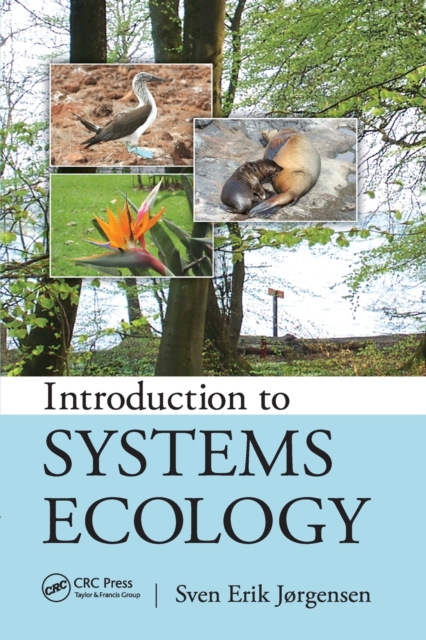Introduction to Systems Ecology

Introduction to Systems Ecology
Possibly the first textbook to present a practically applicable ecosystems theory, Introduction to Systems Ecology helps readers understand how ecosystems work and how they react to disturbances. It demonstrates-with many examples and illustrations-how to apply the theory to explain observations and to make quantitative calculations and predictions.
In this book, Sven Erik J rgensen takes a first step toward integrating thermodynamics, biochemistry, hierarchical organization, and network theory into a holistic theory of systems ecology. The first part of the book covers the laws of thermodynamics and the basic biochemistry of living organisms, as well as the constraints they impose on ecosystems. To grow and develop, however, ecosystems have to evade these thermodynamic and biochemical constraints, so the second part of the book discusses the seven basic properties that enable ecosystems to grow, develop, and survive:
- They are open systems, far from thermodynamic equilibrium.
- They are organized hierarchically.
- They have a high diversity.
- They have high buffer capacities toward changes.
- Their components are organized in cooperative networks, which allows for sophisticated feedback, regulation mechanisms, and higher efficiencies.
- They contain an enormous amount of information embodied in genomes.
- They have emerging system properties.
This timely textbook also looks at how systems ecology is applied in integrated environmental management, particularly in ecological modeling and engineering and in the assessment of ecosystem health using ecological indicators. Acknowledging that there is still much room for improvement, it will inspire ecologists to develop a stronger and more widely applicable ecosystem theory.
PRP: 402.69 Lei
Acesta este Prețul Recomandat de Producător. Prețul de vânzare al produsului este afișat mai jos.
362.42Lei
362.42Lei
402.69 LeiLivrare in 2-4 saptamani
Descrierea produsului
Possibly the first textbook to present a practically applicable ecosystems theory, Introduction to Systems Ecology helps readers understand how ecosystems work and how they react to disturbances. It demonstrates-with many examples and illustrations-how to apply the theory to explain observations and to make quantitative calculations and predictions.
In this book, Sven Erik J rgensen takes a first step toward integrating thermodynamics, biochemistry, hierarchical organization, and network theory into a holistic theory of systems ecology. The first part of the book covers the laws of thermodynamics and the basic biochemistry of living organisms, as well as the constraints they impose on ecosystems. To grow and develop, however, ecosystems have to evade these thermodynamic and biochemical constraints, so the second part of the book discusses the seven basic properties that enable ecosystems to grow, develop, and survive:
- They are open systems, far from thermodynamic equilibrium.
- They are organized hierarchically.
- They have a high diversity.
- They have high buffer capacities toward changes.
- Their components are organized in cooperative networks, which allows for sophisticated feedback, regulation mechanisms, and higher efficiencies.
- They contain an enormous amount of information embodied in genomes.
- They have emerging system properties.
This timely textbook also looks at how systems ecology is applied in integrated environmental management, particularly in ecological modeling and engineering and in the assessment of ecosystem health using ecological indicators. Acknowledging that there is still much room for improvement, it will inspire ecologists to develop a stronger and more widely applicable ecosystem theory.
Detaliile produsului










